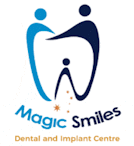
Periodontal disease, also called gum disease, has four stages: gingivitis, slight periodontal disease, moderate periodontal disease, and advanced periodontal disease. Unfortunately, this is one of the most common oral health problems and one of the most common chronic diseases. The good news is that it is easily prevented in most cases and easy to treat and reverse when caught in the earliest stage.
Preventing gum disease is as simple as maintaining a good oral hygiene routine, visiting the dentist regularly, and eating properly. However, even these things aren’t always enough when the cause is genetic or hormonal. That’s why it is so important to attend regular dental cleans and examination appointments every six months.
Concerned that you might have gum disease? Here are the most common symptoms:
Red, swollen, or irritated gums
Inflammation along the gum line is one of the first signs of gum disease. You may notice that your gums are a little more red than usual and brushing and flossing may be a little more painful. These indicate that something certainly isn’t right. You should visit the dentist as soon as possible.
Bleeding gums
If you notice blood in the sink after brushing or flossing, gum disease is most likely the cause. Bleeding gums is the most noticeable symptom. Many toothpaste commercials refer to this as “a little pink in the sink” and claim to reverse gingivitis. While the toothpaste may help, it’s best to schedule a dental cleaning appointment to reduce the risk of the disease progressing.
Bad breath
Gum disease occurs when the bad bacteria in the mouth outnumber the good ones. These take over when plaque and tartar are left on the teeth—again, this is why proper oral hygiene is so important!
These disease-causing bacteria release toxins that have a foul smell, causing your breath to smell bad no matter how much gum or breath mints you chew.
So far, we’ve discussed symptoms that are most common during gingivitis. At this stage, gum disease is reversible when properly treated. Be sure to contact your dentist to schedule a dental cleans appointment if you are experiencing any of these symptoms.
The following symptoms indicate that the disease has progressed from gingivitis to a more severe type of periodontal disease.
Receding gums
When left untreated, the symptoms of gum disease become more and more severe. The bad bacteria will eventually move on to eating away at the gums, making them shorter. In addition to the visible changes, your teeth will become sensitive to hot and cold temperatures as the dentin is exposed.
Shifting or loose teeth
If you notice your teeth don’t quite fit together like they used to when you bite, the bacteria may have moved on to attacking the jawbone which holds the teeth in the proper position. This is a symptom of advanced periodontal disease and should be treated immediately. At this point, you are at a high risk of tooth loss.
Gum Disease Treatment in Woolgoolga
Dental cleans are important for both the prevention and reversal of gum disease. If your gum disease has progressed to a stage that is no longer reversible, don’t fret! We offer effective treatments to stop it in its tracks. This way, no more damage is done to your smile.
To learn more about these treatments and to schedule an appointment with our experienced dentists, call Magic Smiles at (02) 6654-0650 today.


